They are the generation reshaping retail trends of the entire nation. China’s Gen Z, born between 1995 and 2009, number close to 260 million, making up 19% of China’s total population [s].
Similar to millennials who came before them, Chinese Gen Z consumers are vastly different from their parent’s generation. Everything from personal preferences, brand awareness, purchasing power and sophisticated digital literacy is reshaping how brands reach, connect with, and retain consumers in China. They are referred to as the “post-95 and 00 generation” who came of age during a time when China was well into its era of exponential growth and digital revolution. With a high purchasing power and curiosity for new products and experiences, Gen Z are an enticing consumer group for both foreign and domestic brands alike — however, the rulebook is complicated…
Trendsetters.
Fueling domestic brand growth for the first time in history.
Conscious consumers.
Experience-seekers.
……
How can brands effectively reach and retain Gen Z consumers in China? Before we answer this question, let’s take a comprehensive overview of this group of people.
Events that Shaped Gen Z
Gen Z were the first generation to grow up in China where the country was not only “open” but it was beginning to play a major role on the world stage. They grew up in a period of unparalleled growth — between 1989 and 2023 China averaged an annual GDP growth rate of 8.95% [s]. A number of key events shaped Gen Z’s perception of China’s place in the world, and ultimately has impacted their consumption behaviors.
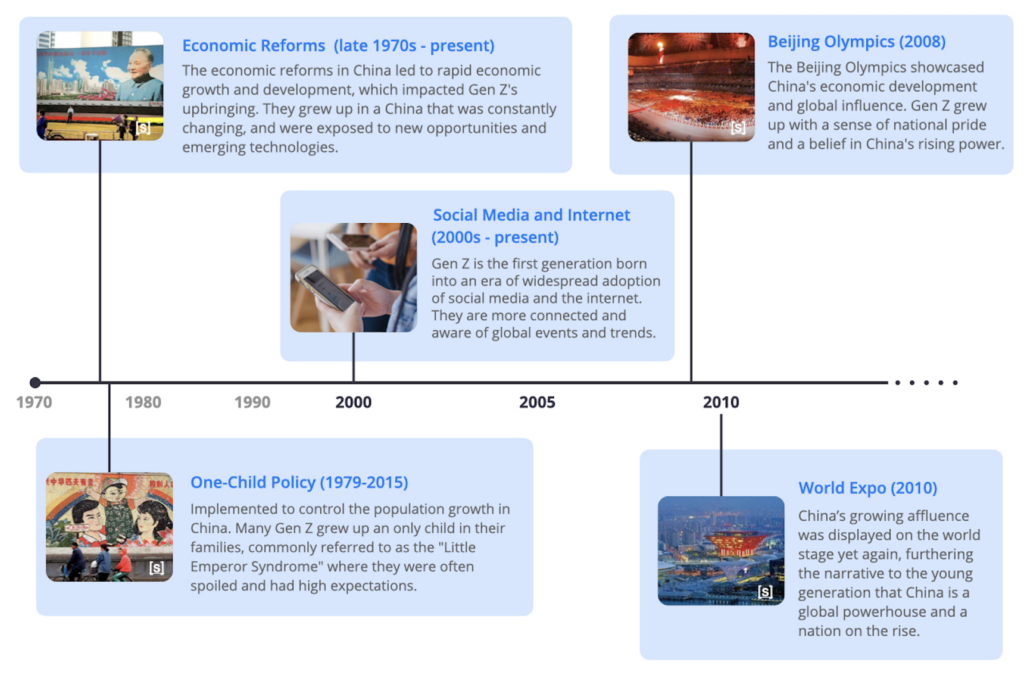
CHINA TAKES THE WORLD STAGE
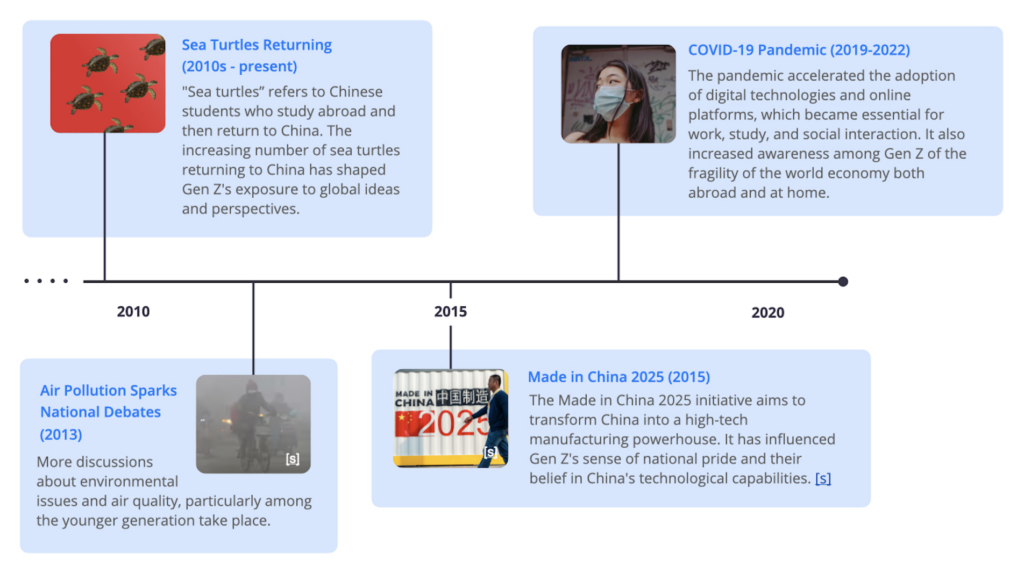
Generation Z has witnessed incredible growth
From the time most Gen Z were attending primary school until today, the average household experienced enormous economic growth. This generation grew up with the mindset that China was on an unstoppable rise and anything was possible.
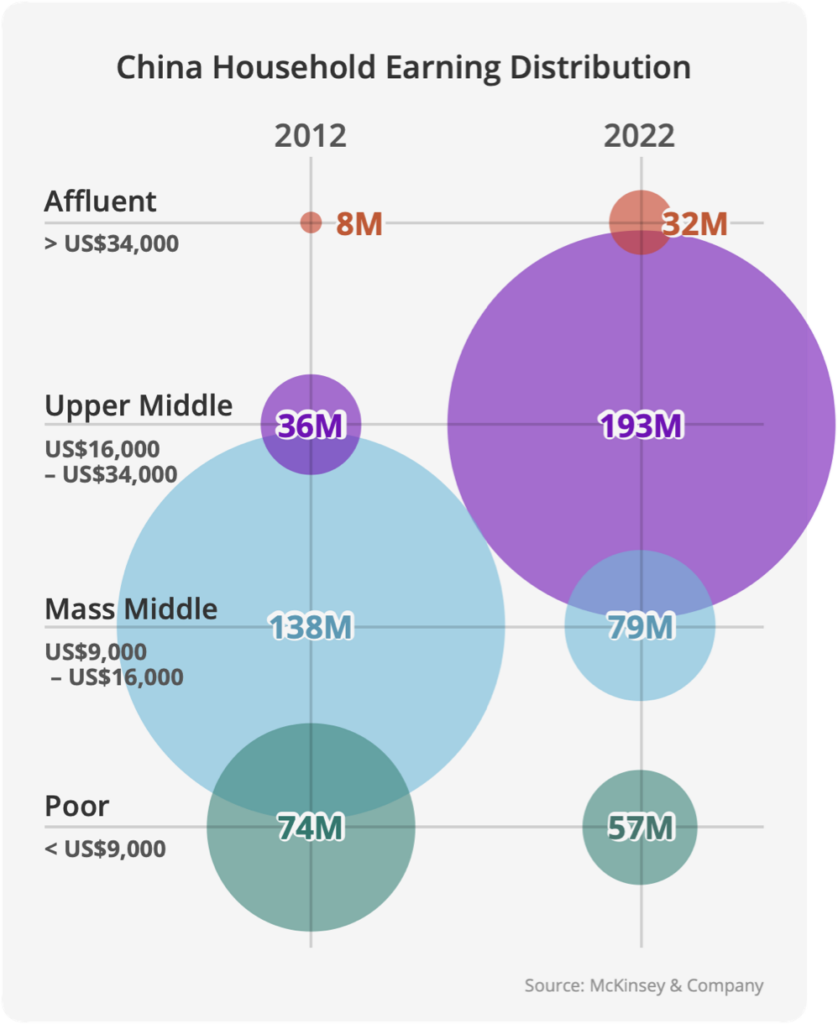
The Digital Generation
Gen Z are truly digital natives. By the time most were born, instant messaging and online forums had taken a firm hold in daily life. Not to mention China’s renowned e-commerce platforms such as Taobao and JD.com had begun to take off. This generation grew up with being able to discover, search and seamlessly purchase products all through mobile Super Apps.
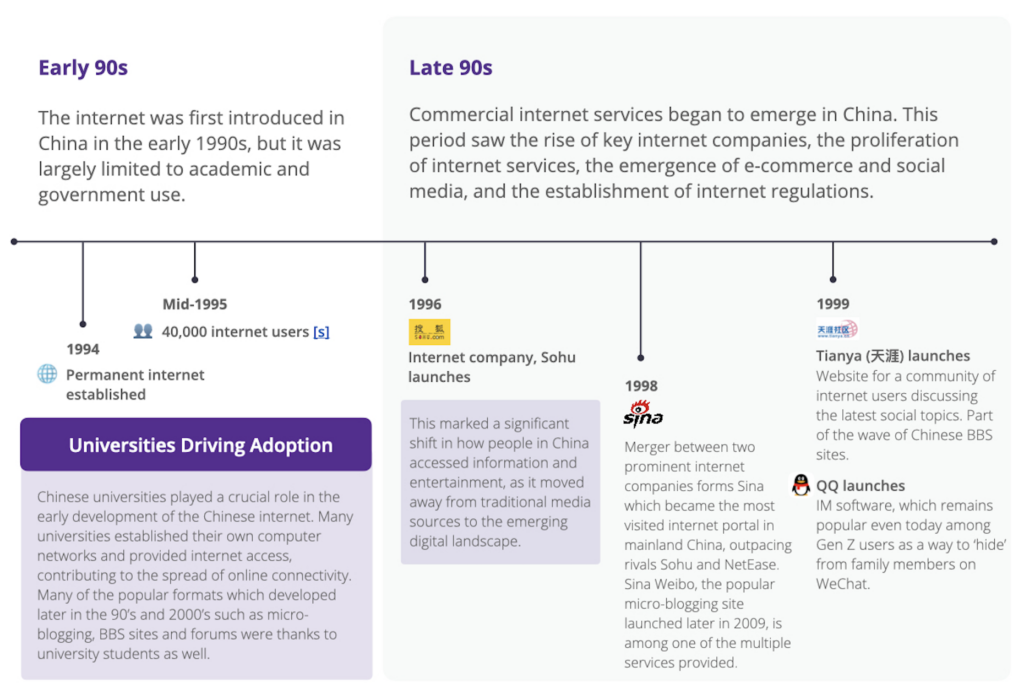

The emergence of the Chinese internet as we know it today
Between 2015 to 2020, the Chinese internet continued its rapid evolution, with mobile internet, e-commerce, fintech, social media, content platforms, and emerging technologies playing a pivotal role in shaping the lives of Chinese consumers. By 2020 nearly 80% of China’s population was accessing the internet, and by 2023 over 98% of China’s internet access is done via mobile.
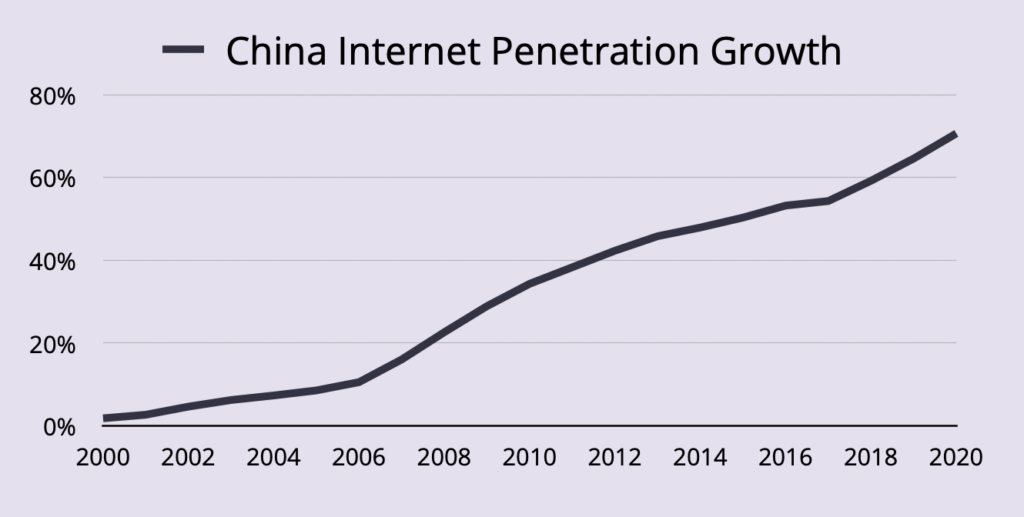
Perhaps most characteristic of China’s internet development, the emergence of live-streaming and short-video platforms began to gain traction. These platforms transformed content creation and consumption habits, creating a new generation of internet celebrities and influencers.
Chinese consumers increasingly turned to digital platforms for entertainment, with video streaming, music streaming, and online gaming becoming major forms of entertainment. In addition, the Chinese government tightened regulations on the internet and technology sectors during this period. These changes included data privacy regulations, cybersecurity laws, and increased scrutiny of internet companies, impacting how they operated. [s]
The emergence of livestream and short video platforms is perhaps the most distinctive aspect of China’s Internet development. It changes content creation and consumption habits, bringing up a new generation of influencers.
So how can brands effectively reach and retain Gen Z consumers in China? Download our whitepaper Social Media Marketing to Generation Z in China to learn how to develop and execute competitive marketing strategies to reach one of the largest consumer segments in China.







